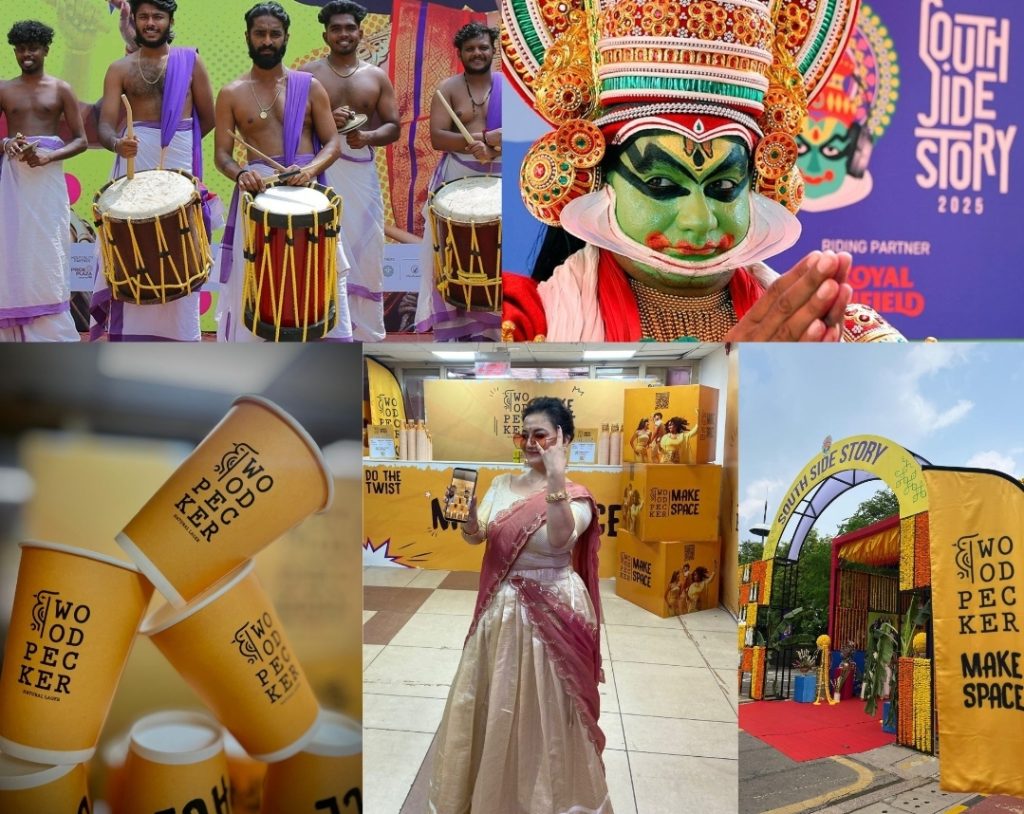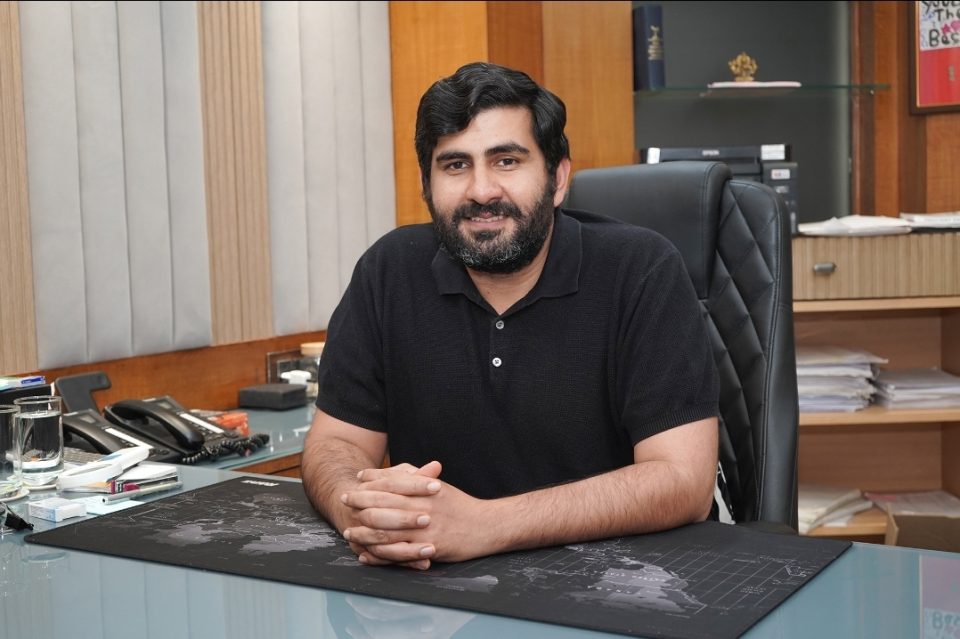Welcome to CXQuest.com, where we explore the intersection of customer experience, brand strategy, and cultural resonance. Today, we’re diving deep into one of India’s most distinctive cultural marketing partnerships of 2025 – Woodpecker’s association with Red FM’s South Side Story festival. This Woodpecker partnership represents more than just brand sponsorship; it exemplifies how premium beverage brands can authentically connect with cultural celebrations while enhancing customer experiences through meaningful engagement.
Our conversation today focuses on how Woodpecker, under the leadership of the SOM Group of Companies, leveraged the vibrant Onam celebrations at South Side Story 2025 to create immersive brand experiences that resonated with both South Indian diaspora and curious North Indian audiences. The festival, held at KD Jadhav Wrestling Stadium in New Delhi over two days in August, drew over 12,000 attendees and showcased an unprecedented blend of music, cuisine, literature, and cultural artistry.
What makes this partnership particularly compelling from a customer experience perspective is how Woodpecker transformed traditional beverage marketing into cultural bridge-building. The brand didn’t merely sponsor the event; it created dedicated “Woodpecker zones” that became cultural hotspots where festival-goers could relax, recharge, and immerse themselves in authentic South Indian traditions while enjoying premium refreshments. This approach demonstrates how brands can move beyond transactional relationships to build emotional connections through shared cultural moments.
Timing and Execution
The timing and execution of this partnership reveal sophisticated understanding of India’s evolving demographic landscape. With 60-65% of attendees being from South Indian backgrounds and 35-40% from North India, South Side Story 2025 represented a unique cultural exchange platform. Woodpecker’s strategic positioning within this space showcases how premium beer brands can authentically participate in cultural narratives while delivering exceptional customer experiences that transcend traditional marketing boundaries.
Today’s discussion will explore the strategic thinking behind this partnership, examining how Deepak Arora, Chief Executive Officer, SOM Group of Companies, and the SOM Group team conceptualized Woodpecker’s role not just as a beverage provider, but as a cultural facilitator. We’ll investigate how this approach aligns with broader trends in experiential marketing, cultural branding, and the evolving expectations of modern consumers who seek authentic, meaningful brand interactions.
Q1. Deepak, when you decided to associate Woodpecker with South Side Story’s Onam celebrations, what drew you to this particular festival format rather than more traditional beverage marketing channels?
DA: Onam is not just a festival, it’s a living expression of community and heritage. For us, Woodpecker shares those same values of making space for celebrations. Traditional marketing builds reach, but festivals like South Side Story build belonging. We wanted to stand to make space for music, food and culture not as advertisers, but as participants.
“Authenticity was our starting point, not just visibility.”
Brand Identity and Cultural Connection
Q2. The South Side Story festival has grown from 1,000 attendees to over 12,000 in recent years. How did you envision Woodpecker’s role in this cultural expansion, and what specific elements of South Indian culture did you want the brand to embrace?
DA: South Side Story has evolved into a cultural movement, and Woodpecker’s role was to act as a bridge. For South Indian audiences, it was a homecoming; for North Indian audiences, a discovery. By embracing Onam traditions — the Sadhya, Carnatic music, art — the brand reflected cultural richness while making it accessible to all.
Q3. You mentioned that Woodpecker is “more than just a drink – it’s about bringing people together over shared moments of joy.” Can you elaborate on how this philosophy translated into the actual customer experience design at the festival venues?
DA: We designed experiences where Woodpecker wasn’t the interruption, but the enabler. Whether through communal dining or live performance lounges, our spaces allowed joy and connection to unfold naturally. The beer was simply the spark around which stories were shared.
“Woodpecker became the backdrop to togetherness, not the headline.”
Q4. From a strategic perspective, how did you analyze the consumer behavior patterns of the 65% South Indian and 35% North Indian audience mix? What data points or insights informed your approach to serving these distinctly different yet converging demographic segments?
DA: We saw two clear motivations: nostalgia and curiosity. Nostalgia-driven guests sought cultural authenticity; curiosity-driven guests were eager explorers. We used data on food choices, dwell times, and stage engagement to balance storytelling — heritage for one group, brewing innovation for the other.
Innovation in Experience Design
Q5. The concept of “Woodpecker zones” is intriguing from an experiential marketing standpoint. Walk us through the strategic thinking behind creating these dedicated spaces rather than traditional booth-style brand presence. How did you measure engagement and effectiveness within these zones?
DA: Booths are transactional; zones are immersive. Inspired by Kerala’s festive aesthetics, these zones created community spaces where people lingered, interacted, and celebrated. Success was measured not by volume served, but by dwell time, repeat visits, and social amplification.
Q6. Woodpecker is positioned as India’s first twist-cap premium beer with cross-malt brewing techniques. How did you ensure that this premium positioning complemented rather than conflicted with the authentic, traditional cultural elements of the Onam celebration?
DA: We positioned Woodpecker as a respectful guest. The twist-cap and cross-malt innovation were framed as craftsmanship, not disruption. Our message was clear: premium can enhance tradition without overshadowing it.
Q7. What specific metrics did you use to evaluate the success of this cultural partnership? Beyond traditional brand awareness measures, how do you quantify the impact of cultural authenticity on customer loyalty and brand perception?
DA: Beyond awareness, we tracked:
– Time spent within Woodpecker Zones
– Social mentions tied to cultural hashtags
– Post-event loyalty indicators
But most critically, we measured cultural authenticity and happiness in diversity whether audiences felt the brand elevated, not exploited, their traditions.
Integration Complexity Analysis
Q8. Managing brand integration across multiple cultural touchpoints – from 20+ dish Onam Sadhya experiences to Carnatic music performances to literature corners – presents significant operational challenges. How did you ensure consistent brand experience while respecting the authenticity of each cultural element?
DA: We worked with a single guiding principle: culture first, brand second. At the Onam Sadhya, branding was subtle and eco-friendly. At Carnatic performances, ambience and lighting carried our presence. Every integration asked one question — does this respect the cultural experience?
Q9. From a behavioral analysis perspective, how do you differentiate between consumers who attend for cultural nostalgia versus those driven by curiosity about South Indian traditions? How does Woodpecker’s messaging adapt to these different psychological motivations?
DA: For nostalgia-driven guests, the voice was warm and familiar: “homecoming with Woodpecker.” For curiosity-driven audiences, it was aspirational: “discover the joy of South India with a twist.” Different emotional entry points, but one shared brand promise.
Q10. In the premium beer segment, cultural partnerships are becoming increasingly important for differentiation. How does this South Side Story association position Woodpecker against established players like Kingfisher Ultra or Heineken in the Indian market?
DA: Where many premium beers focus on lifestyle and glamour, Woodpecker is creating depth through culture. By embedding ourselves in authentic traditions, we are redefining premium not just as aspirational, but as authentic, inclusive, and rooted in heritage.
“Our edge is cultural depth, not just lifestyle sheen.”
ROI and Long-term Brand Building
Q11. Cultural marketing investments often have longer payback periods compared to direct sales-driven campaigns. How do you balance immediate commercial objectives with long-term brand equity building through cultural associations?
DA: Cultural marketing is a long game. To balance, we built immediate activations, sampling, and digital tie-ins — to drive sales. But the real return is equity: being remembered as the brand that respected and celebrated culture.
Q12. Given the success of this partnership, how are you developing frameworks to replicate similar cultural authenticity in other regional contexts? What elements of the South Side Story model could translate to other cultural celebrations across India?
DA: Yes, but always with cultural sensitivity. The framework is scalable, but the content must be local. What worked for Onam won’t be copied for Durga Puja or Baisakhi — instead, we’ll co-create with cultural custodians to ensure authenticity every time.
Q13. Looking ahead, how do you see technology – perhaps AR experiences or personalized cultural content – enhancing the intersection between premium beverage brands and cultural festivals? What’s your vision for evolving these experiences?
DA: Technology will bring scale to personalization. AR-enabled bottles could unlock festival stories; curated playlists could blend tradition with modern beats. My vision is to make cultural experiences borderless, where tech helps brands like Woodpecker connect both emotionally and digitally.
Q14. Finally, reflecting on your business administration background from ISB Hyderabad and your entrepreneurship experience from Lancaster University, how has your academic foundation influenced your approach to cultural marketing and experiential brand building in the Indian beverage industry?
DA: ISB gave me a strategic foundation; Lancaster nurtured my entrepreneurial instinct. Together they taught me that brand building is both art and science. Cultural marketing embodies this balance — respecting heritage while applying systems to scale it
“Heritage without structure is nostalgia; structure without heritage is hollow. The magic lies in combining both.”

Closing
As we conclude our fascinating exploration of Woodpecker’s cultural marketing masterclass at South Side Story 2025, it becomes clear that this partnership represents far more than innovative brand activation – it exemplifies the future of customer experience in India’s evolving cultural landscape.
Deepak Arora and the SOM Group’s strategic approach to cultural authenticity offers valuable insights for brands navigating India’s complex demographic mosaic. Their success in creating meaningful connections between a premium beverage brand and traditional Onam celebrations demonstrates how thoughtful cultural integration can drive both immediate engagement and long-term brand equity. The transformation of over 12,000 festival attendees into brand ambassadors through authentic cultural experiences showcases the power of experiential marketing when executed with genuine respect for cultural traditions.
The strategic implications of this partnership extend beyond the beverage industry. Woodpecker’s “zones” concept – creating dedicated spaces for cultural immersion while maintaining premium brand positioning – provides a replicable framework for other brands seeking authentic cultural connections. The measurable success in engaging both nostalgic South Indian diaspora and curious North Indian audiences validates the commercial viability of cross-cultural marketing strategies in India’s increasingly interconnected society.
Brands That Understand and Celebrate
Perhaps most significantly, this case study illuminates how modern consumers, particularly in urban India, are seeking brands that understand and celebrate their cultural identity rather than merely targeting their purchasing power. Woodpecker’s evolution from a premium beer with innovative twist-cap technology to a cultural facilitator represents a sophisticated understanding of contemporary consumer psychology and the emotional dimensions of brand loyalty.
The lessons from South Side Story 2025 will undoubtedly influence how brands approach cultural marketing across India’s diverse regional celebrations. As Deepak noted, this partnership exemplifies values of “culture, energy, and celebration” – principles that transcend product categories and speak to fundamental human desires for connection and belonging. The success of this initiative suggests that the future of customer experience lies not in choosing between commercial objectives and cultural authenticity, but in finding innovative ways to honor both simultaneously.
For customer experience professionals, marketing strategists, and cultural branding enthusiasts, Woodpecker’s South Side Story journey offers a compelling blueprint for building meaningful, lasting relationships with consumers through shared cultural moments. As India continues to urbanize while maintaining its rich cultural heritage, brands that master this delicate balance will find themselves uniquely positioned for sustainable growth and authentic consumer connection.
Thank you for joining us on CXQuest.com for this insightful exploration of cultural marketing excellence. We look forward to continuing our conversations about innovative customer experience strategies that honor tradition while embracing the future of brand-consumer relationships.

